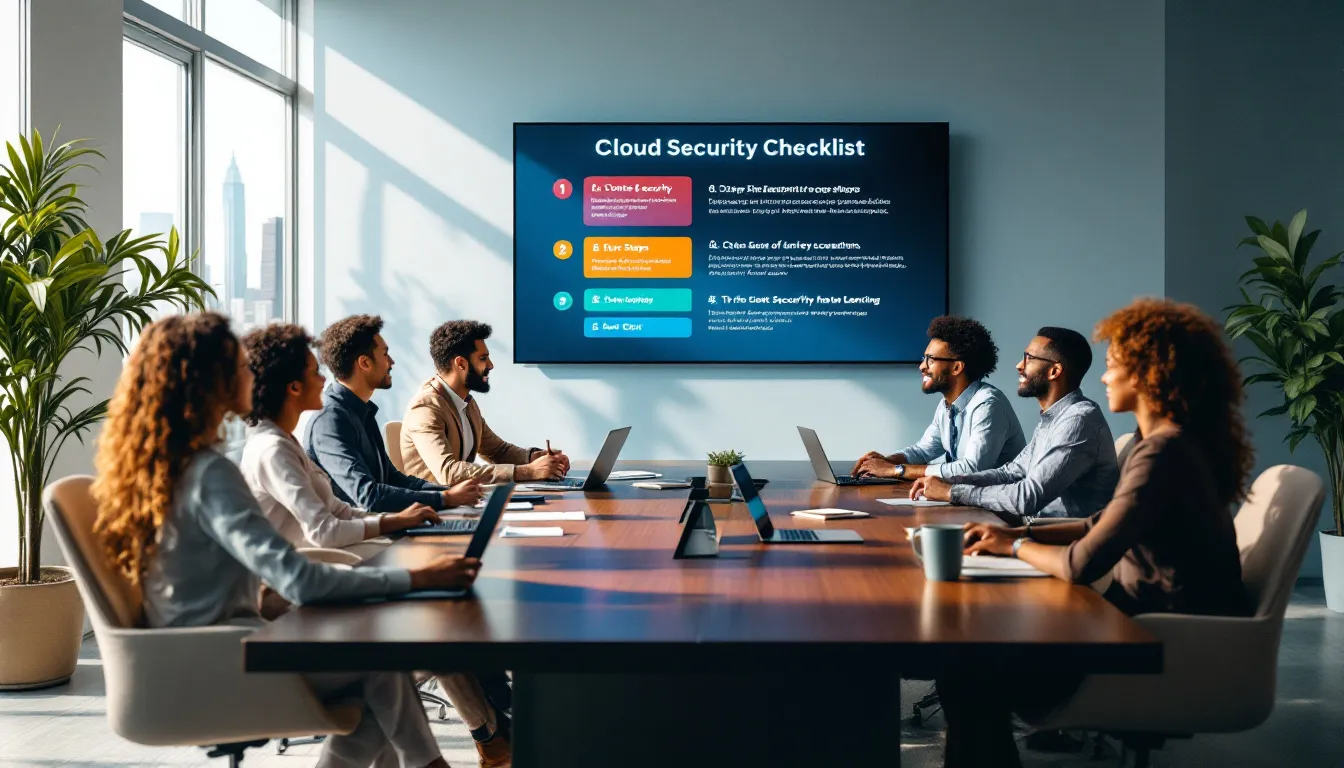Cloud computing in 2024 is all about speed, security, and efficiency. Businesses are adopting smarter tools and strategies to meet modern demands. Here's a quick overview of the key trends shaping the future of cloud:
- Zero Trust Security: A "trust no one, verify everyone" approach to secure cloud systems.
- Automation: Using AI and machine learning to reduce manual work, predict resource needs, and streamline operations.
- Hybrid and Edge Cloud: Combining public and private cloud for flexibility, with edge computing for faster data processing.
- Continuous Delivery: Frequent, smaller software updates for faster rollouts and fewer risks.
Companies like DiversiCloud lead the way by creating tailored cloud systems that prioritize security, efficiency, and scalability. Tools like Terraform and Harness are helping businesses automate processes and cut costs.
Quick Comparison
| Trend | Benefits | Use Cases |
|---|---|---|
| Zero Trust Security | Reduces breaches, ensures compliance | Enterprises handling sensitive data |
| Automation | Cuts manual work, boosts efficiency | Manufacturing, Banking, LifeSciences |
| Hybrid & Edge Cloud | Flexibility, faster response times | Healthcare, Finance |
| Continuous Delivery | Faster updates, less deployment risk | Software development |
The future of cloud computing combines AI, security, and hybrid setups to help businesses stay agile and competitive.
Automation: Making Cloud Operations More Efficient
In 2024, cloud automation has become a must-have for businesses looking to cut down manual work and boost efficiency. Companies are now pushing to automate every possible business process through hyperautomation, changing how they handle their cloud systems.
"The philosophy that everything that can and should be automated will eventually be automated is driving the adoption of advanced automation technologies", explains a recent industry report on hyperautomation trends.
How AI and Machine Learning Improve Cloud Platforms
Think of AI as your cloud's smart manager - it handles complex tasks that used to need human hands. These systems can predict when you'll need more (or less) computing power and adjust automatically. Real-world examples? E-commerce sites use this tech during busy shopping seasons, while banks put it to work spotting fraud and processing transactions on the fly.
The Role of Serverless and Edge Computing
Edge computing is like having mini data centers closer to users - it's faster and more responsive. Take Netflix: they store shows and movies near their viewers, so when you hit play, there's no waiting around.
Serverless computing strips away the headaches of managing servers. Companies can focus on writing great code while their cloud provider handles everything else. Meanwhile, edge computing brings processing power right where the action is.
| Computing Model | Key Benefits | Best Use Cases |
|---|---|---|
| Serverless | Zero server management, auto-scales with demand | Event-driven apps, microservices |
| Edge | Super-fast response times, instant processing | Streaming platforms, IoT devices, live analytics |
Popular Automation Tools for Cloud Management
Today's cloud automation tools pack a punch. Harness helps teams ship software faster while keeping cloud costs in check. Terraform lets you write code that sets up your infrastructure across different cloud platforms. With cloud systems spreading out more than ever, these automation tools aren't just nice to have - they're essential.
These advances in automation work hand in hand with other cloud trends, helping companies build systems that are quick to adapt, secure, and cost-effective.
Zero Trust: Strengthening Cloud Security
Old security methods that focus on defending the perimeter don't work anymore. Why? Because users and devices now work outside traditional network boundaries in the cloud. The numbers tell the story: 72% of organizations will move to Zero Trust by 2025 (Gartner), while 80% of security incidents happen because of stolen credentials (Verizon's Data Breach Investigations Report).
"Zero Trust has evolved into a business necessity, not merely a security framework", emphasizes John Kindervag, Field CTO at Palo Alto Networks.
Core Principles of Zero Trust Security
Zero Trust boils down to one simple rule: trust no one, verify everyone. Every user, device, and app must prove themselves - no exceptions. Think of it like a nightclub where everyone needs to show ID at the door, even if they've been there before.
Steps to Implement Zero Trust in the Cloud
Here's what you need to know about putting Zero Trust into action:
| Implementation Area | Key Components | Purpose |
|---|---|---|
| Access Control | Just-in-time access, least privilege principles | Cuts down risk exposure |
| Identity Management | Multi-factor authentication, biometrics | Makes sure users are who they say they are |
| Network Security | Micro-segmentation, encrypted communications | Stops threats from moving around |
How Zero Trust Improves Security for Businesses
Let's look at real results: When Google switched to Zero Trust in 2022, they saw security incidents drop by 50%. That's not all - Zero Trust helps companies stay on the right side of GDPR and HIPAA by keeping data locked down tight.
AI and machine learning make Zero Trust even better. They spot threats in real-time and fight back automatically, like having a super-smart security guard who never sleeps.
While Zero Trust keeps your data safe, it's just one piece of the puzzle. Next up: how continuous delivery helps businesses move fast without breaking things.
sbb-itb-695bf36
Continuous Delivery and Hybrid Cloud: Improving Agility
Cloud spending is set to hit $679 billion by the end of 2024, pushing companies to rethink their software delivery and infrastructure management. Companies now see that mixing hybrid cloud flexibility with continuous delivery automation isn't just nice to have - it's a must to keep up with competition.
Why Businesses Are Turning to Hybrid Cloud
Take DiversiCloud as an example. They show how companies can keep their data safe while growing their operations by mixing private and public environments based on what each business needs. It's like having the best of both worlds - private cloud keeps sensitive data secure, while public cloud lets you scale up when needed.
This setup is perfect for industries like healthcare and finance, where following strict rules about data handling is non-negotiable. Companies in these fields can stick to regulations AND tap into cloud power for their day-to-day work that doesn't involve sensitive information.
How Continuous Delivery Fits Into Cloud Processes
Here's an eye-opening stat: 75% of large enterprises will use container management by 2024. Why? Because continuous delivery is changing how updates work. Instead of big, scary updates every few months, companies can now push small changes more often - with less risk and faster fixes if something goes wrong.
What does this mean for businesses? They get:
- The power to release updates daily (or whenever needed)
- Less stress about deployments (smaller changes = smaller risks)
- Quick fixes when issues pop up (we're talking minutes, not days)
- Less manual work through automation
Tools That Support Continuous Delivery
Getting continuous delivery right means having the right tools in your corner. These tools work together to create a seamless pipeline from development to deployment, ensuring quality and reliability at every step.
Better Deployments
- Containerization (Docker, Kubernetes): Creates consistent, isolated environments across development, testing, and production
- Infrastructure as Code (Terraform, CloudFormation): Manages infrastructure with version-controlled configuration files
- CI/CD Platforms (Jenkins, GitHub Actions, GitLab CI): Automates build, test, and deployment processes
- Version Control (Git): Tracks all code changes with complete history and collaboration features
- Artifact Repositories (Artifactory, Nexus): Stores and manages build outputs and dependencies
Quality Assurance
- Automated Testing Frameworks: Validates code at multiple levels (unit, integration, end-to-end)
- Code Quality Tools (SonarQube): Analyzes code for bugs, vulnerabilities, and technical debt
- Feature Flags: Enables controlled feature rollouts and quick rollbacks if needed
Smoother Operations
- Observability Tools (Prometheus, Grafana): Provides real-time monitoring, metrics, and visualization
- Log Management (ELK Stack, Splunk): Centralizes and analyzes application and system logs
- Incident Management (PagerDuty, OpsGenie): Alerts teams to issues and coordinates responses
- Configuration Management (Ansible, Chef): Maintains consistency across environments
Security Integration
- Vulnerability Scanning (Snyk, Dependabot): Identifies security issues in code and dependencies
- Secret Management (HashiCorp Vault): Securely stores and controls access to tokens, passwords, and certificates
- Compliance Automation: Ensures adherence to security and regulatory requirements
Many businesses team up with service providers to handle the technical heavy lifting. This lets their internal teams focus on what they do best, running the business, while experts take care of the continuous delivery and hybrid cloud setup.
Case Studies: Companies Using Modern Cloud Strategies
DiversiCloud's Approach to Tailored Cloud Solutions
DiversiCloud has made its mark in cloud solutions by doing things differently. Instead of treating security and automation as afterthoughts, they bake them right into their core strategy. Their focus? Moving data safely, keeping costs down, and building systems that grow with their clients.
Think of their approach like building a house: they put in the security system during construction, not after the house is built. This means setting up automated security checks and round-the-clock monitoring from day one. It's especially helpful for companies that handle sensitive information and need to follow strict rules.
Here's how DiversiCloud puts their strategy into action:
| Strategy Component | Implementation Approach | Business Impact |
|---|---|---|
| Automated Resource Management & Hybrid Infrastructure | Automation-driven scaling with custom public-private cloud mix | 30-40% cost reduction, improved flexibility |
| Security Integration | Zero trust architecture with continuous monitoring | Enhanced compliance and reduced risk |
Other Companies Adopting Modern Cloud Practices
The cloud landscape is changing fast, and companies across industries are stepping up their game. They're mixing different approaches, like running workloads across multiple clouds while using edge computing for speed and AI for smarter operations.
What's catching on? Companies are focusing on:
- Spreading their workloads across different cloud providers to avoid putting all their eggs in one basket
- Using edge computing to process data where it's created
- Bringing in AI and machine learning to make better decisions faster
With cloud spending expected to hit $679 billion by the end of 2024, more companies see that getting their cloud strategy right isn't just nice to have - it's a must-have for staying competitive.
Conclusion: Preparing for the Next Era of Cloud Computing
Key Points for Business Leaders
The cloud landscape keeps changing at breakneck speed. To stay ahead, companies need to master three key areas:
| Focus Area | What to Do | Business Impact |
|---|---|---|
| AI & Automation | Add machine learning, use serverless tech | Cut costs, work smarter |
| Zero Trust Security | Check every user, segment networks | Stop data breaches, boost protection |
| Hybrid Setup | Mix cloud providers, use edge computing | Work anywhere, run faster |
Here's the thing: You can't just focus on one area. Take DiversiCloud - they've shown that success comes from blending smart automation with tight security. It's like building a house - you need solid foundations AND good locks.
But don't get too comfortable. Tomorrow's tech is already knocking at the door.
What's Next for Cloud Technology
Edge computing is changing how we handle data - imagine having mini data centers right where you need them. It's like moving your kitchen closer to your dining room - everything's faster and fresher.
AI and machine learning aren't just buzzwords anymore. They're the brains behind:
- Smarter resource management
- Fixing problems before they happen
- Better security
- Processing data on the fly
Serverless computing keeps getting better at balancing costs with speed. It's becoming a must-have, not just a nice-to-have.
Cloud companies are going green too. They're building eco-friendly data centers and cutting energy waste. This isn't just good PR - it helps businesses meet their environmental goals while keeping operations running smoothly. Add quantum computing and AI to the mix, and you've got a preview of tomorrow's cloud: powerful, smart, and clean.
FAQs
What are the three main elements of a Zero Trust implementation?
Zero Trust architecture has three key building blocks that work together to keep systems secure:
| Element | Description & Purpose |
|---|---|
| Identity Verification | Makes sure users prove who they are before getting access to anything |
| Device Health | Keeps watch on all devices to spot and block any that might be compromised |
| Least-Privilege Access | Gives users only the exact permissions they need to do their jobs |
Take DiversiCloud - they've put these ideas to work in a way that keeps things locked down tight while letting business move fast.
But good security is just part of the story. Getting the most from the cloud also means having smart ways to roll out new code and features.
What is the difference between continuous delivery and deployment in AWS?
Think of Continuous Delivery (CD) as having your foot hovering over the brake pedal. Everything's automated right up to going live, but you still get a final say. Let's say you've built a new customer dashboard - CD lets your team take one last look before showing it to users.
Continuous Deployment is like putting your car in self-driving mode. Once your code passes all its tests, it goes straight to users without anyone needing to press a button. Amazon does this all the time - that's why you sometimes notice new features just showing up in your account.
Both ways can work great - it just depends on what fits your team better. Want more control? Go with Continuous Delivery. Got rock-solid testing? Continuous Deployment might be your speed.


